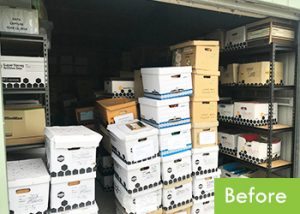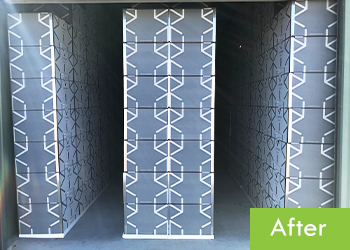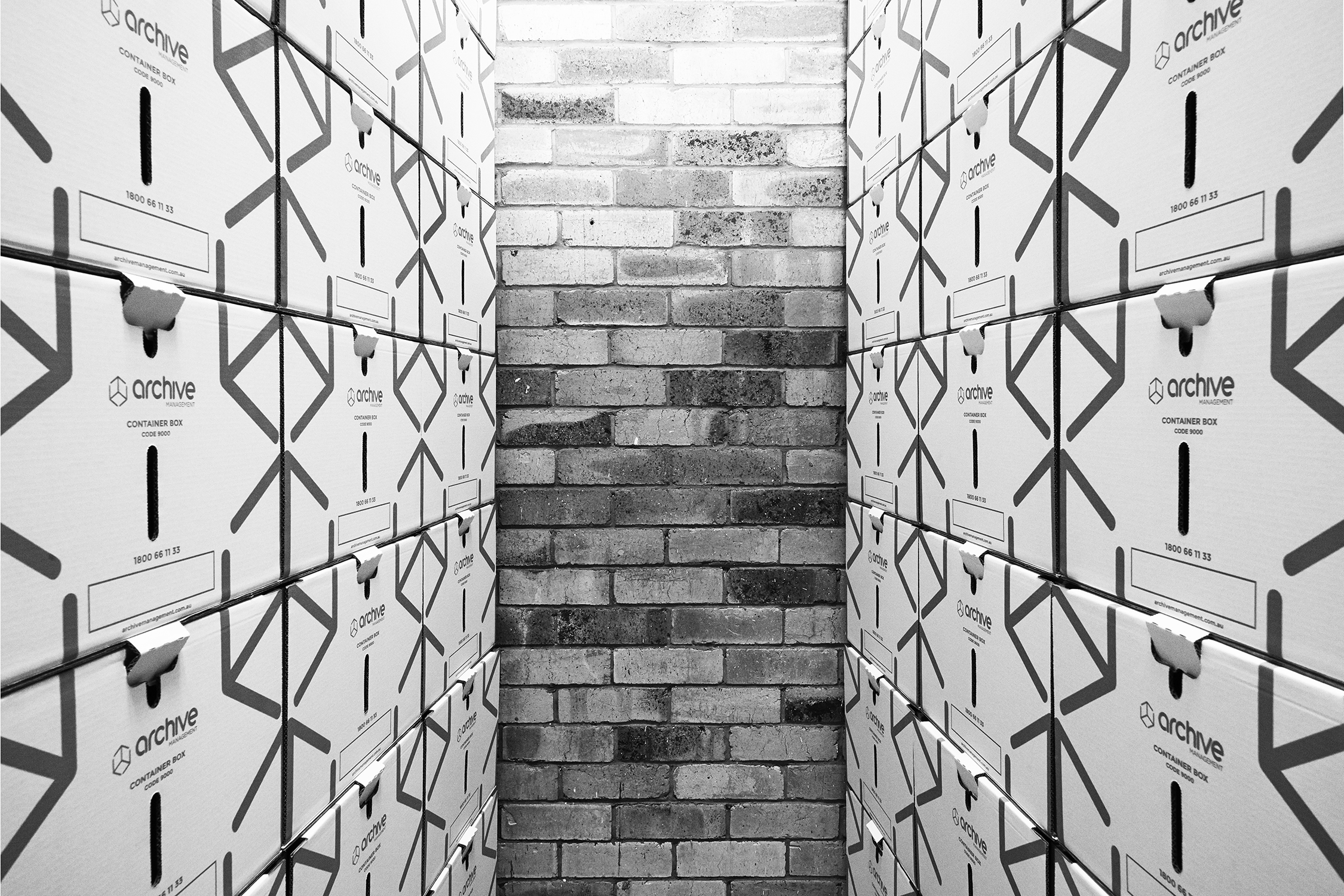
We see this a lot at schools, where the mounting headache of overflowing records reaches tipping point.
This shed at Elanora State High School in Queensland was at 100% capacity, literally overflowing with records. After we were finished with it, they had 40% vacant space to play with. Same volume of paperwork, same size area, just a smarter system.
What it took
Our team pulled all the material out, installed the new archive system, sorted the documents, re-packed them into the new system and catalogued the contents into a simple database.
When we arrived, important records were beginning to find their way to random corners of the grounds, just waiting to be misplaced. You can imagine the ensuing nightmare when it came to retrieving the right document when needed!
Don’t put it off
Clients like this know something needs to be done about the growing problem, but a clean up can be, understandably, daunting. It took our team of experts almost four days to turn this school’s headache around! You can imagine how long it would have taken its own already-stretched human resources.
The job was completed during school holidays, ready and waiting for the client when they arrived back in the new year. And now that it’s been established – with 40% extra space freed up for future records – they can simply add to the existing system as required. They can also now easily retrieve what they need by referencing the database we provided for them.
Why it works better than your alternatives
Given this school’s storage shed is located a fair walk from the administration building, we also created a smaller “audit system” in the admin office. This was designed to store recent material more likely to be retrieved. Once full, these boxes of records will simply get added to the main system in the storage shed.
It’s this kind of adaptability that our modular and relocatable system offers that fixed shelving or compactuses simply cannot. We create systems big and small, to fit any kind of space. They can be broken up into separate sections, stacked up to nine boxes high if needed while remaining completely freestanding. No shelving or support walls needed. You can imagine the efficiency of such a flexible system and how we saved this school so much space!




